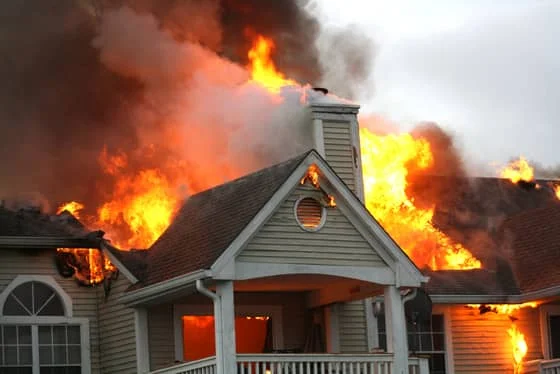In a world where safety is paramount, understanding what things are flammable in your home can be a lifesaver. Due to the rising number of fire incidences, homeowners, parents, and other individuals concerned with safety are paying more attention to fire risks. Recent Statistics indicate that There are more than 300,000 home fires in the U.S. each year resulting in hundreds of injuries and property damages worth billions.
The Hidden Perils of Everyday Flammability
Understanding what things are flammable is crucial, especially when preparing to sell a fire-damaged house. There are countless common items in our households that are potential fire starters, making it crucial for householders to appreciate the flammable risks associated with their properties. To appreciate the combustibility of these items, it will allow seller to take certain measures to prevent the possible dangers to the prospective buyers.
This knowledge of the flammability of materials also helps in making choices regarding the arrangement and storage of items, reducing the possibilities of further fire occurrences. Whether you just moved into a house or you have been a homeowner for a long time, evaluating safety in the house periodically makes quite a big difference. Knowledge and alertness could help in better securing the premises and safeguarding it from possibilities of fire that would otherwise lead to loss of the house’s value in the market when it is time to sell.
Identifying Flammable Household Items
Wondering what things are flammable? Here’s a list to get you started:
- Aerosol Sprays: These containers are often used in deodorants, hair stylings sprays, cleaning solvents, and are pressurized such that they can burst when exposed to fire.
- Certain Fabrics: Materials like nylon, polyester, and silk can catch fire easily, especially when untreated.
- Cleaning Agents: Products containing alcohol, ammonia, or bleach may ignite under certain conditions.
If these combustible materials are easily recognized, the house occupants have the ability to control and alleviate the threats involved. This prevention strategy is particularly important in protecting families and properties.
The Risks of Flammable Items
Understanding what things are flammable is crucial when selling a fire-damaged house. Such items can catch fire in an instant, distributing flames all over the house with great risk. Fire dangers tend to be quite unpredictable since they can occur at any time without notice. With aerosol sprays as an instance—at increased temperatures, they can turn extremely flammable. Just one spark around these aerosol cans can cause a big bang endangering lives and properties.
The consequences go beyond the physical harm to encompass health hazards as well. Respiratory issues may arise from inhaling the fumes of burning substances, whereas extending the duration of exposure to smoke may culminate in other health challenges in the future. Addressing these dangers before they manifest is essential for ensuring safety and peace of mind in the home-selling process.
Awareness is the key to mitigating these risks. Educating family members about the potential hazards and implementing safety measures ensures a safer living environment. Consistent evaluations of household items can prevent fire-related incidents, reducing the risk of becoming one of the many fire-damaged homes for sale.
Safe Storage Solutions for Flammable Items
Proper storage can significantly reduce the risks associated with flammable household items. Here are some tips to ensure safety:
- Aerosol Sprays: Keep it in a dry and shaded place that extends bonny ray and hot objects.
- Flammable Fabrics: Keep away from open flames or heated appliances.
- Chemical Cleaners: Lock in cabinets, especially out of reach of children and pets.
Safe Storage Solutions for Flammable Items
Proper storage can significantly reduce the risks associated with flammable household items. Here are some tips to ensure safety:
- Aerosol Sprays: Store in cool, dry places away from direct sunlight and heat sources.
- Flammable Fabrics: Keep away from open flames or heated appliances.
- Chemical Cleaners: Lock in cabinets, especially out of reach of children and pets.
Every house hold should give first priority to storage aspects. Adhering to these practices enables homes to be safe and helps lessen the chances of expensive fire damages.
Practical Tips for Reducing Fire Risks
Recognizing any potential fire starters is important, but that is secondary to the most important thing, hate. In this case action. Here are some useful tips to minimize the fire hazards in ones’ household:
- Routine Checks: Regular assessments should be made for possible fire threats while ensuring that all combustibles are well accommodated.
- Smoke Detectors: Install in multiple areas of the home and test regularly to ensure functionality.
- Fire Extinguishers: Ensure that they are placed in strategic areas around the house and that all members of the household know how to use them.
Such practices are the building blocks of an all-inclusive home safety strategy. Routine inspections and maintenance not only help in fire prevention but also ready the households in case of an emergency.
Incorporating these tips into daily routines enhances overall safety

